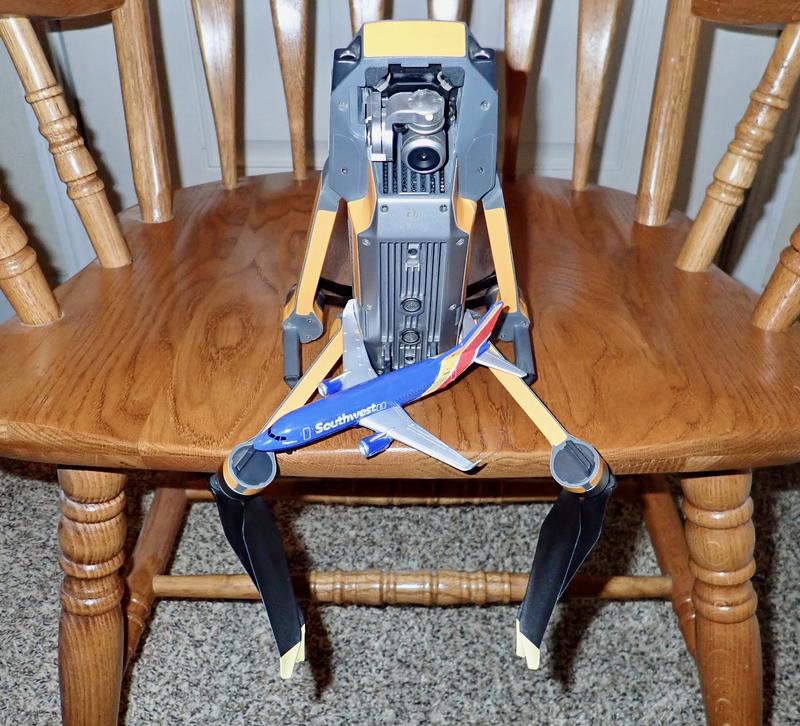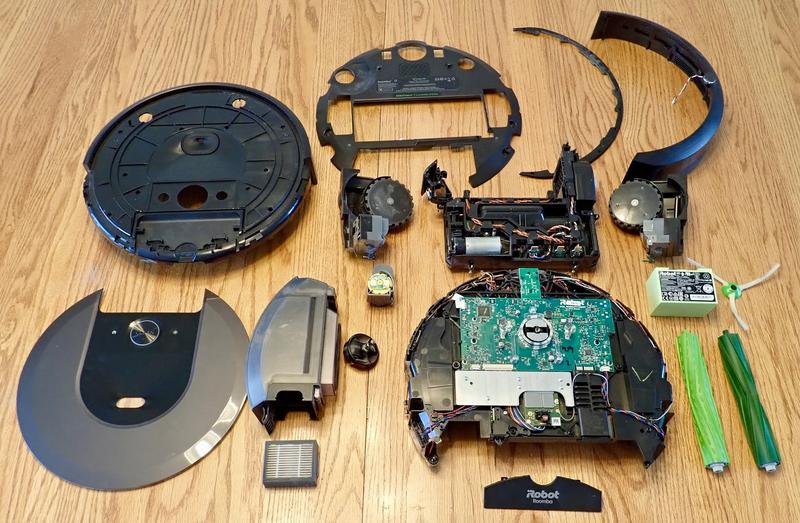If you don’t follow aviation or UK news, you might not have heard that the London Gatwick airport was shut down from Wednesday evening through Friday, because of drone interference over the runway. In other words, “Someone very deliberately flying a drone, of some form, over the airport, specifically to shut down operations.”

And they were doing a damned good job of it. Or the people trying to stop it were completely unprepared.
I’m actually quite surprised that it’s taken this long for a deliberate attack on an airport like this - the technology has been around for a long while, but so far, most incidents seem to be “stupidity” based, not so much “malicious.” This? This is malicious. We’ll certainly see changes out of it, though they won’t actually accomplish much. And I’m playing with those ideas for this week’s post.
The police claim to have a couple in custody, which should also be interesting to watch.
Added Sunday Dec 23: And the couple has been released and cleared of suspicion. So no suspects yet.
Drones, Planes, and Disruption
The interactions of drones and full size aircraft is something I’ve paid quite a bit of attention to, because both are relevant to me. I’m a Part 107 licensed remote operator (technically remote pilot, I prefer the term operator) who has written somewhat extensively about the Mavic Pro, and I’m also a private pilot who flies Cessnas. I have a strong interest in never having the two areas collide in the sky, and go out of my way to avoid being a contributor to that when I’m the ground.
I’ve followed the various comings and goings of drones, some of the regulations, and, of course, a bit of the technology. You’ll probably get various lies in the news from journalists who don’t know what they’re talking about (which, sadly, is the common case), so I’ll try to set a few things clear(er) about this incident and what’s likely coming.
No, I don’t like the term “drone” being used for semi-autonomous multi-rotors, but it’s the term in use, so I’m using it.
Disrupting an Airport
Gatwick is somewhat south of London, and is a fairly major airport in the UK. Gatwick is effectively a single runway airport - while it has two runways, they’re too close for parallel operation, which means there’s only a single active runway, and that makes it quite easy to disrupt operations. I’d assume a single drone hovering over a larger airport would shut down the airport as well, but Gatwick is certainly easy - park a drone over the single runway, done.
It’s not a bad area to fly secret drone operations from, either. Whoever is flying the drone is either pretty close (within a mile or so), or has it programmed for autonomous waypoint flight. Either one is possible, and I don’t have any information about which is more likely. I’d probably program it for autonomous ingress/egress, with a hard-to-follow flight profile, but without seeing it fly, I don’t know. It’ll also depend somewhat on the goals - is someone emotionally detached and simply disrupting the airport for (reasons), or are they enjoying it, and taunting the security forces as they fly with the camera? But, the airport is surrounded with a mix of housing, fields, and forested areas, which makes it fairly easy to land and hide.

In terms of operating range, modern quadcopters are quite insane. My Mavic Pro has a flight distance of 8 miles, which means I could realistically have it fly a mile or two, hover for a while, and still make it back. Obviously, that’s not something I’m going to do, as it violates quite a few regulations, but I do get the impression that whoever is messing with Gatwick doesn’t quite care about things like airspace or line of sight (their whole thing being illegal operations). A fixed wing UAV can travel much further, but it sounds like it’s a multirotor being flown, which limits operations to a “few mile radius” - still an awful lot of area.
DJI makes the most common drones on the market, and they have a geofencing database that prevents one from flying right around an airport. They have authorization zones, in which one must provide a phone # or credit card number to fly, and restricted areas, in which they simply won’t operate. Gatwick is covered, rather tightly, by such a zone, though one could easily fly right off the end of the runway without limitations if you had a non-easily-tracked phone # or such.

I’m somewhat more of a fan of what DJI has done (quite recently, actually) with the Boise airport (KBOI). The restriction zone is far more limited, but they also have altitude restrictions protecting the approach and departure paths. This is, IMO, quite reasonable. If you’re curious, the red spots at the bottom are a prison area - smuggling stuff into and out of prisons with drones is apparently quite the big business. The blue region to the north is an upcoming TFR for a bowl game.

There’s only one problem: None of this matters. There’s a Russian company who offers software patches to remove geofencing from DJI drones. Presumably, if you’re slightly sophisticated, you can remove the geofencing yourself.
And there’s a whole world of non-DJI drones, including the purely DIY drones, which aren’t subject to this at all. There are fully open source drone control software packages for commonly available hardware platforms, and if you want to go disrupt an airport, just build yourself something from commonly available parts, without any limitations. It’s not that hard, and buying an Arduino or Raspberry Pi, a GPS receiver, a few motors, and some props, doesn’t exactly stand out as suspicious. There are tons of various hobby drone platforms and kits one could modify.
Why Would You Disrupt an Airport?
Technical feasibility being “trivial to easy” (if you ignore the news articles talking about “PhD intelligence, at a minimum, to manage this…”), why would someone want to disrupt an airport like this? I can think of a number of reasons, and while I have my bets, it’s quite likely that if the reason is found (I give it quite good odds that it won’t be, though some groups may claim responsibility), it won’t be one of these.
The Lulz
The easiest one to consider is “lulz.” The sport of doing something for laughs, because you can. Because you think it’s funny. Because it’s fun to watch people and the media freak out. Because screwing up tons of people traveling for Christmas is just how you get your kicks.
At this point, I don’t think it’s particularly likely. “The Lulz,” typically, isn’t the sort of sustained, detailed attack that this sees to be. Flying your drone down the centerline of the runway once, forcing a go-around or two, and posting the video (carefully anonymized behind your seven proxies) to YouTube? Yeah, that’s lulz. This? It seems far more planned and malicious, so far.
Local Housing Opposition to the Airport
For reasons I do not understand, people who hate airplanes buy houses near airports. They then proceed to complain endlessly about the airport in an attempt to get it shut down. I can only assume they’re either idiots, or scheming individuals who intend to profit by getting airports shut down and therefore raising their home value.
If someone is really annoyed with the traffic from Gatwick, they could set out to get some peace and quiet by shutting the airport down for a busy time. It’s a lot of work, and it risks very substantial jail sentences (5 years, if I’m not mistaken). While you might get some peace and quiet, a homeowner (or even a lot of them) is quite unlikely to shut down a large airport, no matter how annoying they happen to be.
On the other hand, Gatwick is trying to expand - and this might be someone trying to throw a wrench in those works.
The people arrested do, apparently, live fairly close (within a few miles), which would put some weight behind this reason.
Terrorist Groups
Screwing up an airport doesn’t seem like the sort of thing a terrorist group would do - unless cramming the concourse is then followed by something far more immediately lethal, which hasn’t happened (and flights are getting back to normal). Any time you can get a dense, mostly annoyed crowd of people together, effects are amplified - not only by the number of people, but by the response. If someone managed to set off something that sounded like a small bomb at one end of the terminal after people were exhausted by living in the airport for a few days, it doesn’t matter if it actually is a bomb or not - all you have to do is get people to panic, and the fatality count will be substantial. Disrupted Christmas travel, a few days of poor sleep, and any sort of suitably loud noise would work.
But, practically, I just don’t see shutting down an airport as much use to any sort of terrorist organization. Drones are certainly useful to them, but shutting down an airport is just annoying.
Environmental Groups
Another possibility is an environmental group doing a direct action trial - “How badly can we screw up air travel by messing with an airport during a busy few days?” The goal would be cancelled flights, certainly, but also just disruption and reducing public trust in the reliability of the airlines. I’ve seen criticism that points out (rightly so) that the fuel used for relocating planes and generally un-tangling the mess is likely to be more than the fuel saved by shutting down the airport, but that only matters if this is a one time action. If it’s a trial for future actions, and we see more airports disrupted in the future, the net effect is likely to be reduced air travel (and, likely, somewhat reduced travel in general). If this is the goal, you’ll likely see disruptions at other major hubs around the world. In the United States, disrupting LAX (Los Angeles), ORD (O’Hare), and ATL (Atlanta) would likely suffice to completely snarl up traffic for the country, and have a major impact globally. They’re harder to disrupt than single runway airports, but the same concept applies - park a visible drone out there, they’ll shut down operations until they solve the problem. And the concept has been wonderfully demonstrated.
Anti-Drone or Drone Regulation Groups
A final concept I’ve heard tossed around is that it’s a group of people who want stronger restrictions on who can buy and operate various aerial platforms, and are trying to make some point to get regulations passed, or additional restrictions, or… something like that. I can’t say it’s a terribly compelling sounding argument to me.
Drone Defenses
Expect to hear a lot in the coming weeks (if you pay attention to this sort of stuff) about the assorted drone defense technologies that exist. They fall into a few categories, and there’s probably stuff they won’t talk about, but in general, you’ll see the following.
DJI Aeroscope is a product in a class of “Drone Detection Equipment.” They’re essentially long range wireless sniffers that look for “drone communications” signals. Presumably, if you’re DJI, you know what the signals look like on the 2.4GHz band (or 5GHz, or… whatever they operate on), so you can sniff them out of the sky pretty easily. Any aerial platform is a more or less omnidirectional transmitter, so they’re pretty easy to listen in on. If a ground transmitter is in range, a suitably elevated antenna should be able to pick that up too. I don’t know details of what all is in DJI’s communication between the remote and the drone, but I know that drone location is present, I know that you can update the home point to where the remote currently is (which requires transmitting a location), and there are various modes that track the remote - so location of the remote can be sent, though I have no idea if it’s always being sent.
This type of hardware will let you know where a drone is, if you happen to be listening in and a drone happens to be transmitting, but I don’t know how widespread the support is for various other systems. DJI’s system will obviously work against the most-common DJI products, but will it work against Parrot products? I don’t know. There are other products that seem to work against a wider range of manufacturers, but I don’t believe they allow interception of command streams.
Another category of hardware falls under the “jammer” category. These attempt to disrupt the communication with the drone by sending high power RF energy at the drone (or just in the area - depending on the system). If you fire a tight beam of energy at the airborne unit, it won’t be able to hear the ground station, and you may be able to prevent the ground station from receiving any transmissions as well (depending on how the jammer is implemented).
If the drone is configured to return to home on loss of communication, at this point, you should be able to follow it home. If it’s configured to hover and land, you can at least capture it (which will allow you to pull logs off - said logs will contain useful things like “where it took off from” and serial numbers).
Turning the jammer up to 100 (on a 1-10 scale) changes it from a jammer to a directed energy weapon, in which you send enough RF energy at the drone to actually fry the electronics and take it out of the sky. Don’t stand in front of these antennas.
Then, of course, there are “kinetic” defenses. This mostly involves “shooting it out of the sky,” though it would also include things like net cannons that capture a drone. Anything that physically touches the drone would be kinetic.
Sophistication Required
How hard would it be to pull off a few days of airport disruption? Easier than one might wish.
I’ve seen a few articles speculating on how this requires “a ‘genius’ with a PhD” and “elite hacker knowledge” to… do whatever they think the operator is doing. I fully expect to see this attack being performed by less-than-PhDs, because you just don’t need that - and, I’ll also offer, that if the suspects currently in custody are actually the correct people, it’s going to have been something dead simple like, “Fly a not-DJI product from our back yard and stand on the roof to watch it as we fly it to the airport.” They got caught in a few days, which both says poor things about their operation, and says poor things about the airport types who took a few days to catch them. Or, perhaps, “Fly from a van or pickup truck around the area with FPV goggles.”
If you were a sophisticated operation with PhDs in something relevant, you could put together operations that would be remarkably difficult to shut down, and that would be distributed enough that not only would the people involved not get caught, you could disrupt an airport, intermittently, for weeks. Go look at the range on some of the fixed wing UAVs, and figure out how far away you could launch something fully autonomous from with a loiter time of “a few hours” around the airport. You can still buy gasoline (or nitro) powered model aircraft engines, and a “flying tanker” type airframe would easily have a range of 100 miles, done right. If it’s a one way mission, there’s no need to have any transmissions from the unit at all - just put everything in a somewhat shielded enclosure, pop out a compass and GPS receiver antenna, and program in a flight path to make yourself annoying (and flash your lights every so often to “taunt the police”). Climb off into the distance, circle around, come back down… the sky is (literally) the limit in creativity for keeping an airport closed. I can think of a few ways to do hard-to-hunt-down C&C as well, should one want a bit more control over things (or some video to leak with a message).
That it doesn’t happen more often just shows how little the vast majority of people care to disrupt daily life. Relying on people not wanting to disrupt things, though, may not be wise as we continue our clattering descent down the backside of empire.
Incoming Regulations
It’s almost certain that the UK will have additional regulations from this. Politicians can’t resist “Doing Something” about a suddenly obvious problem, and this will likely take the form of horridly thought out, counter-productive, annoying regulations that do nothing, simply because someone will grasp onto them as “Something.” As in, “We have to do something, this is something, therefore we must do it.” It won’t impact anyone who cares to go about disrupting airports, but at least some politician will be able to pat themselves on the back.
In the US, where I live? I wouldn’t mind far stronger regulations on who can buy drones, personally.
They’re operating under the old RC aircraft rules, give or take, and there is a huge, giant, insane practical difference between an RC helicopter or RC airplane, and a Mavic Pro. The RC helicopters or RC planes require them to be fairly close in to maintain visual orientation on them. You can’t fly them out until they’re a speck in the distance and still control them, you can’t go fly them a few thousand feet up over the clouds, etc. They fly, but they’re close in. You can buy a new drone, pop a battery in, and go fly it a few miles away. I assure you, at a few miles, you can’t see it. At half a mile, it’s hard. So, while my Blade CP and my Mavic Pro are considered the same, I strongly disagree with that grouping, and would like to see a major change. I’m entirely OK with requiring a Part 107 remote operator cert or something to buy a long range drone, though I expect this won’t be a popular opinion.
Will the US see anything out of this? Probably not. We’ve just shut down the government (again) in a pissing match over a border wall, and neither side seems particularly interested in budging, so I don’t expect this to attract any real attention over here - until someone shuts down US airports. Then we’ll get something.
Final Thoughts
Our current technology base is depressingly easy to disrupt - motivated individuals can disrupt surprisingly large systems without that much effort, and even though the media will claim it takes insanely sophisticated experts to manage such an attack, the reality is that it doesn’t - it just takes someone willing to try, and willing to face the possible consequences.
Airport disruption, up until now, has been along the lines of “stupid kids trying to get video of planes landing” - not deliberate disruption. The model has been proven, so expect to see copycats in the years to come.
Next week, I’ll be doing some reflections on 2018, followed in Jan by goals for 2019 - and I’ve got some big ones!
Comments
Comments are handled on my Discourse forum - you'll need to create an account there to post comments.If you've found this post useful, insightful, or informative, why not support me on Ko-fi? And if you'd like to be notified of new posts (I post every two weeks), you can follow my blog via email! Of course, if you like RSS, I support that too.







